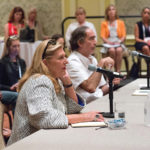There are several common mistakes associations make when it comes to sponsorships. Many seem to believe that they “own” their industry, so they don’t have to make a business case for sponsorship. With the advent of industry bloggers and social media, those associations no longer have a lock on their industries and are starting to struggle.
Other associations sell sponsorship the old-school way, gold, silver, and bronze levels, with each level offering some combination of logos on things, tickets to things, some kind of designation, and some kind of hospitality. It’s like offering three, five, or 10 different sizes of apples for sale. It commoditizes what you offer, and most sponsors will take the lowest level.
In addition, associations often treat sponsorship as a cost of doing business for the sponsors. They sell small, often pitifully small, sponsorships (seriously, lanyard sponsorships?), with their main sales pitch being that potential sponsors need to sponsor something or they will be conspicuous by their absence. The problem with this is that it severely limits potential revenue. You’re basically offering logos on stuff, a ticket to one or more events, and possibly the right for the sponsor to stand up in front of an audience and bore them to tears.
Sponsors are looking for larger, fully customized sponsorships that may stretch across multiple events or programs, and creative ideas to leverage that marketing opportunity with their target audience.
In the best kinds of sponsorships, the sponsor wins, the sponsorship seeker wins, and the target market wins. Orange, one of the U.K.’s major mobile-phone carriers, really gets this equation right in its sponsorship of the Glastonbury Festival. The ways that Orange has continued to evolve its leverage activities at the music festival for more than a decade are insightful for organizations across all industries:
- Orange’s festival micro-site, an epicenter for all of its Glastonbury-related activities, is a top destination for music fans year-round, with interviews and video blogs with performers, behind-the-scenes information and pictures, highlights, and a massive photo gallery of festival life.
- Its Chill ‘n’ Charge tent provides customers with a place to recharge their mobiles during the multi-day festival. There are 600 chargers and more than 30 broadband points in the tent, as well as live music by top artists. And a special foot-powered phone charger extends Orange’s commitment to green innovation.
- GlastoNav is an interactive, constantly updated festival planner for mobile phones. (View a YouTube video on Orange’s Glastonbury 2011 app.)
- Free music, full tracks, ringtones, and more for their mobile phones, is provided to Orange customers who text a special number.
- Customers are encouraged to send photos and stories from the festival to a special number, creating a massive communal blog.
Just Ask
Orange created multiple ways to address one of the biggest problems at Glastonbury: recharging mobile phones. Ask your members or conference attendees what are the three best and three worst things about the event, association, and/or their career, and, if they could wave a magic wand, what they would want in those areas. Their answers can help you figure out ways for sponsors to amplify the good and improve the bad stuff.
More Resources
Download Generic Inventory, a free eight-page list of everything a sponsorship seeker can sell around a property, customizable for specific organizations.



